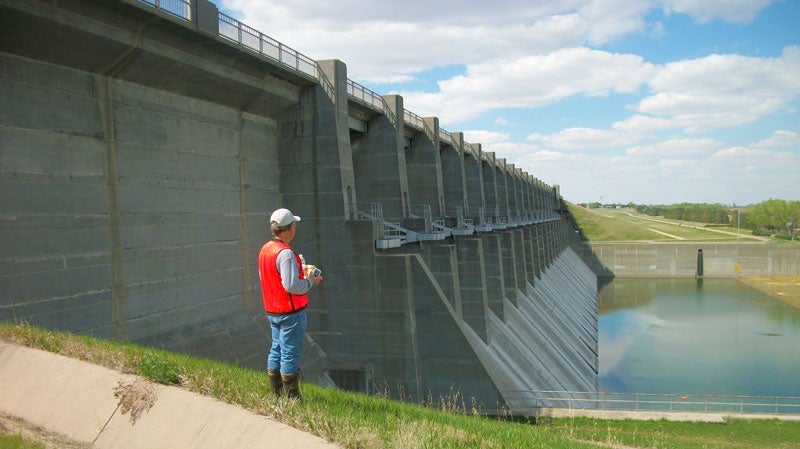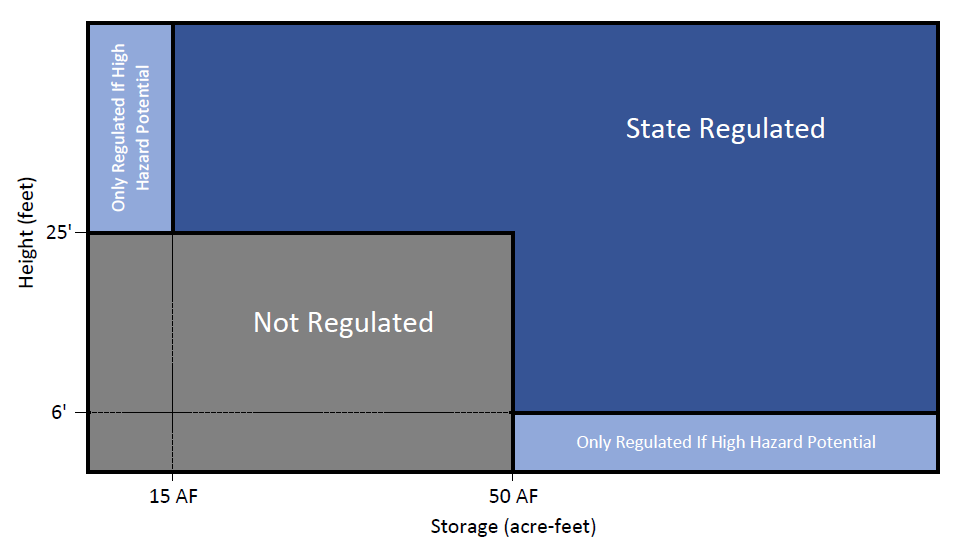We regulate the construction, operation, and maintenance of dams in Nebraska to protect life and property from dam failures.
To promote the safety of dams in Nebraska, we:
- Maintain an inventory of dams in Nebraska
- Review plans for the construction or modification of dams
- Inspect all dams in the state
- Provide training to owners and engineers
- Assist with dam related emergency preparation and response activities

There are over 2,800 dams on the Nebraska Dam Inventory, the vast majority of which are earthen embankment dams. Although most of the dams in the State are located in rural areas and are classified as low or minimal hazard potential, 5% of the dams are classified as high hazard potential and 7% are classified as significant hazard potential due the potential for loss of life and damages to property if they were to fail.
Kingsley Dam in Keith County, which was completed in 1941, is the largest and the tallest dam in the State with a maximum storage capacity of 2,200,000 acre-feet and a height of 163 feet. The oldest dam still in existence is Kearney Dam in Buffalo County which was constructed in 1885. The majority of the dams in the State were constructed more recently. It is estimated that 85% of the existing dams in Nebraska were constructed after 1960.

The Department of Water, Energy, and Environment has jurisdiction over dams in the State that have a total height of 25 feet or more or have an impounding capacity at the top of dam of 50 acre-feet or more.
Please note, a storage permit may be required regardless of the size of the dam. See Approval of Dams for information.
Dams in Nebraska are categorized primarily by the potential for loss of life and damages to property if the dam were to fail. The hazard potential classification is not an assessment of the dam’s condition or its likelihood of failure. The four hazard potential classifications for dams are as follows:
- High hazard potential means a hazard potential classification such that failure or misoperation of the dam resulting in loss of human life is probable.
- Significant hazard potential means a hazard potential classification such that failure or misoperation of the dam would result in no probable loss of human life but could result in major economic loss, environmental damage, or disruption of lifeline facilities.
- Low hazard potential means a hazard potential classification such that failure or misoperation of the dam would result in no probable loss of human life and in low economic loss.
- Minimal hazard potential means a hazard potential classification such that failure or misoperation of the dam would likely result in no economic loss beyond the cost of the structure itself and losses principally limited to the owner's property.



